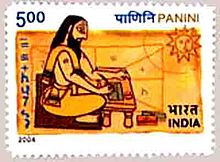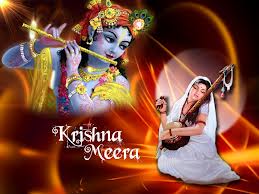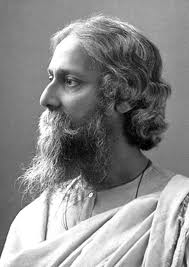
There are over 100 crore Hindus in the world. Hinduism is the world’s oldest religion. Hinduism is the only major religion of the world that can neither be traced to a specific founder nor has a holy book as the one and only scriptural authority. Ancient Hindus gifted a number of holy books to the world including, the Ramayana, the Bhagavad Geeta, the Mahabharata, the Veda-s, the Upanishad-s, and the Purana-s.
For thousands of years, Hindus have looked upon the Vedic texts as the fountainhead of all their knowledge, culture, heritage and existence. The breadth of Vedic literature is truly astounding. Varied topics satisfy the needs from a brahmachari (student) to a grihastha (householder) to a retired person including:
- The 4 Veda-s viz. Rig Veda, Yajur Veda, Sama Veda and Atharva Veda with their constituent Samhitas, Brahmanas, Aranyakas and Upanishads.
- The primary Upanishad-s viz. Brihad-aranyaka, Chhandogya, Aiterya, Taittiriya, Isha, Kena, Katha, Prashna, Mundaka, Mandukya, Shwetasvatara, Kaushitaki, Maitri, Subala, Jabala, Paingala, Kaivalya and Vajrasuchika.
- Purana-s like Agni, Bhagavata, Bhavishya, Brahma, Brahmanda, Brahmavaivarta, Garuda, Kurma, Linga, Markandeya, Matsya, Narada, Padma, Shiva, Skanda, Vamana, Varaha, Vayu and Vishnu Purana. Srimad Bhagavata Purana, the most popular Purana includes the transcendental childhood deeds of God Krishna. Narada Purana beautifully summarizes all the Veda-s, other Purana-s and the Vedanga-s.
- Itihasa viz. Ramayana and Mahabharata. The Mahabharata is the longest poem in the world at 100,000 stanzas
- The Bhagavad Geeta, which is said to be a commentary on the Upanishad-s.
- Upapurana-s (ancillary Purana) which include Devi-Bhagavatam, Sanat Kumara, Harivamsha, Narasimha, Brihan-naradiya, Shiva-rahasya, Durvasa, Kapila, Bhargava, Varuna, Kalika, Samba, Nandi, Surya, Nilmata, Parashara, Vasishtha, Ganesha, Mudgala and Hamsa
- Vedanga-s (arms of Vedas) which include Shiksha (pronounciation), Chhandas (poetics), Vyakarana (grammar), Nirukta (explanation of words), Kalpa (rites for routine life events) and Jyotisham (auspicious time or astrology)
- Upa-Veda-s (ancillary Veda) viz. Sthapathya Veda (architecture), Dhanur Veda (weaponry), Gandharva Veda (music) and Ayurveda (medicine), which are totally varied subjects
- Dharma Shastra-s and smriti-s like Manu Smriti, Yajnavalkya Smriti, and Narada Smriti
- Sutra-s like Yoga sutra and Brahma sutra
- Shastra-s like Rasayan shastra, Vastu shastra, and Natya shastra
- Darshana-s or the different philosophies like Nyaya, Vaisheshika, Sankhya, Yoga, Mimamsa and Vedanta. There were healthy debates, but never animosity between followers of different paths.
Sanskrit was the language used to communicate all these Vedic concepts. Sanskrit is made up of 2 words viz. Sanskara and krita, which means to instil a refined culture. Sanskrit is called Deva-bhasha, meaning the language of the Gods. Hence, it is also the oldest known language in the world. Sanskrit continues to be a living language even today during Hindu ceremonies when mantras (ritual verses) are chanted.
Sir Monier Monier-Williams, the author of the famous Sanskrit-English dictionary wrote:
“India has only one sacred language and only one sacred literature, accepted and revered by all adherence of Hinduism alike, however diverse in race, dialect, rank and creed. That language is Sanskrit and that literature is Sanskrit literature – the repository of Veda or ‘knowledge’ in its widest sense; the vehicle of Hindu theology, philosophy, law, and mythology; the one guide to the intricacies and contradictions of Hinduism; the one bond of sympathy, which, like an electric chain, connects Hindus of opposite characters in every district of India.”
The ancient Indian literary tradition was primarily oral i.e. sung or recited. As a result, the earliest records of a text may be much later than the date of its actual composition.
Bharata’s literary classic Natya Shastra is the Bhagavad Geeta of dramatic art. Kalidasa’s Shakuntala is a heroic play, a model for literary works. While Shudraka’s Mrichchhakatika was a play of the social class. Bhavabhuti was another well-known figure, his best being Malatimadhava and Uttaramacharita (based on Ramayana). The great Sanskrit poems are Kalidasa’s Raghuvamsa and Kumarasambhava, Kiratarjuniya of Bharavi, Sishupalavadha of Magha and Naishadhiyacharita of Sriharsha. Shorter poems of great depth were composed on a single theme like love, morality and sometimes of grave matters. The earliest and best writers were Bhartrihari and Amaruka.
The other Sanskrit works are Vasavadatta of Subandhu, Kadambari and Harshacharita of Bana and Dasakumaracharita of Dandin. The Panchatantra and Hitopadesha are collections of wisdom, teaching political science and proper conduct through animal fables.
 The Bhakti tradition
The Bhakti tradition
The earliest traces of Bhakti (a personal devotion to a god) are in the Veda-s and Purana-s. Bhakti is also found in the work of the Tamil Alvars (mystics who wrote ecstatic hymns to Lord Vishnu). Further flowering of the Radha-Krishna cult happened under the Hindu mystics Chaitanya in Bengal and Vallabhacharya at Mathura. Other Indian literature in the vernacular languages included the 12th century CE poems by Jaydev called the Gitagovinda (the cowherd Lord Krishna’s Song). Bhakti poems composed by Vidyapati in Maithili (eastern Hindi of Bihar) were of great influence on the Bhakti traditions of Radha-Krishna in Bengal. In the 16th century CE, the Rajasthani princess and poet Meerabai addressed her Bhakti to Lord Krishna, as did the Gujarati poet Narsinha Mehta.
Bhakti was also addressed to Lord Rama, most notable being Ramcharitmanas by Tulsi Das in the Avadhi (eastern Hindi) language. Bhakti floods every channel of Indian intellectual and religious life.
The early Gurus or founders of the Sikh religion, especially Nanak and Arjun, composed Bhakti hymns to their concepts of deity. These are the first written documents in Punjabi and form part of the Adi Granth (first book), the sacred scripture of the Sikhs, which was first compiled by Arjun in 1604 CE.
The regional influences
India has a total of 1,652 different languages and dialects! The study of language has been developing into a science since the first text on the grammar of Sanskrit by Panini, thousands of years ago.
The origin of most scripts for the Indic languages can be traced to Brahmi. Its adaption, Devanagari is used for Indian languages including Sanskrit, Hindi, Marathi, Nepali and Prakrit. Gujarati, Bengali, Assamese, Oriya, Manipuri, Punjabi, Sindhi etc. all have individual writing systems derived from Devanagari.
About 23 Dravidian languages are spoken mainly in southern India, including Tamil, Kannada, Malayalam and Telugu. Tamil writings also belong to the same era of classical Sanskrit. Themes of devotional love like the Tolkappiyam (Old Composition) are very ancient. Two long Tamil verse romantic epics were written viz. Silappatikaram (the jeweled anklet) by Ilanko Atikal, and its sequel Manimekalai (The Girdle of Gems). Thiruvalluvar, a celebrated Tamil poet, wrote the epic Thirukkural, a work on ethics.
In medieval Indian literature, many other works were regional. Examples are the Charyapada-s in Bengali, Tantric verses of the 12th century CE and later the Lilacharitra in Marathi. Many Kannada and Gujarati works were popular tales based on ancient Sanskrit themes. Another example was in Rajasthani of the bardic tales of chivalry and heroic resistance to the first Muslim invasions – such as the 12th-century CE epic poem Prithiraja-raso by Chand Bardai of Lahore.
In the 16th century CE, Jagannath Das wrote an Oriya version of the Bhagavata Purana. Tuncattu Eruttacchan, the father of Malayalam literature, wrote commentaries of traditional literature. In 18th the century CE, Assamese and Marathi prose chronicles, poetic ballads and folk drama and dances became popular. Some traditional Indian literature was derived from the Buddhist and Jain texts written in the Pali language and Prakrit (medieval dialects).
The barbaric Afghan invader Mohammad Ghauri said:
“I have heard that there is a country of people where the mountains are made of gold, the cultivable lands are made makhmal and the children of this land play the toy balls made of diamond.”
Amir Khusroo – a 13th-century CE Sufi philosopher and poet from India once visited Iran. In Iran he was asked to introduce himself. And his response was marvellous: “Why are you asking me to introduce myself! I am a parrot of India?”
The Modern Period
The Rig Vedic Sanskrit is the oldest attested member of the Indo-European language family. The Christian raiders were struck by the far-reaching similarity of Sanskrit, both in grammar and vocabulary, to the classical languages of Europe.
Sir William Jones said in 1786 CE:
“The Sanskrit language, whatever be its antiquity, is of a wonderful structure; more perfect than the Greek, more copious than the Latin, and more exquisitely refined than either, yet bearing to both of them a stronger affinity, both in the roots of verbs and the forms of grammar, than could possibly have been produced by accident; so strong indeed, that no philologer could examine them all three, without believing them to have sprung from some common source, which, perhaps, no longer exists; there is a similar reason, though not quite so forcible, for supposing that both the Gothic and the Celtic, though blended with a very different idiom, had the same origin with the Sanskrit…”
 During the later era, Swami Vivekananda’s works are considered to be great examples of English literature in India. Sir Rabindranath Tagore was the first Indian to win the Nobel Prize for literature (1913 CE). Work by other great Indian writers include Mulk Raj Anand and RK Narayan, who was a writer of novels and tales of village life in southern India. The first of Narayan’s many works, ‘Swami and Friends’, appeared in 1935. The other well-known writers are C. Rajagopalachari, Veer Savarkar, AK Ramanujan (for his translations of Tamil classics), Aurobindo, Salman Rushdie, and many others.
During the later era, Swami Vivekananda’s works are considered to be great examples of English literature in India. Sir Rabindranath Tagore was the first Indian to win the Nobel Prize for literature (1913 CE). Work by other great Indian writers include Mulk Raj Anand and RK Narayan, who was a writer of novels and tales of village life in southern India. The first of Narayan’s many works, ‘Swami and Friends’, appeared in 1935. The other well-known writers are C. Rajagopalachari, Veer Savarkar, AK Ramanujan (for his translations of Tamil classics), Aurobindo, Salman Rushdie, and many others.

